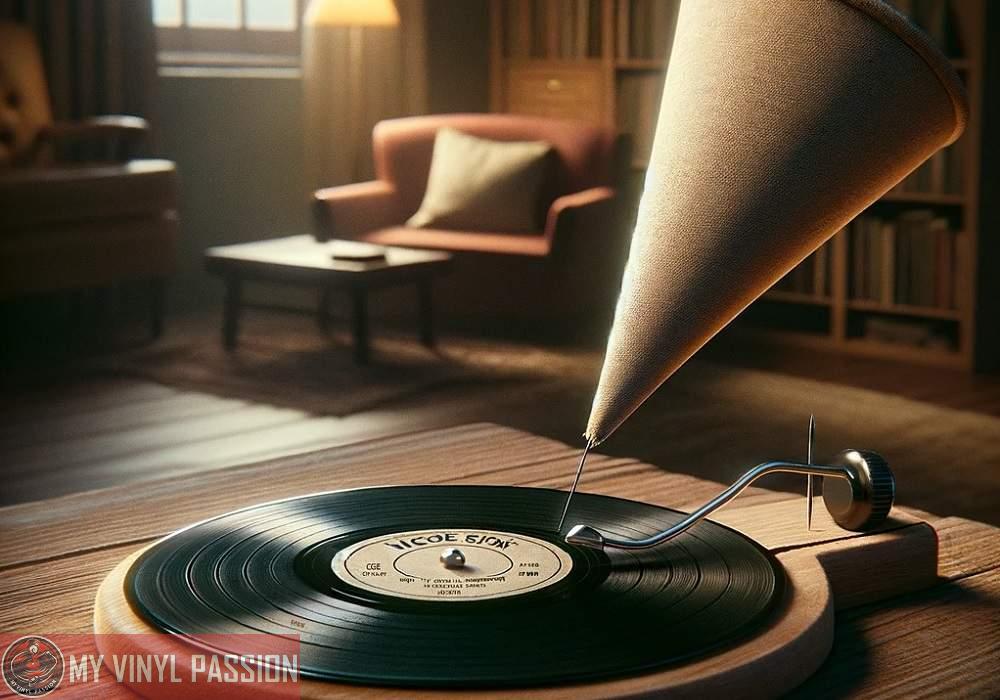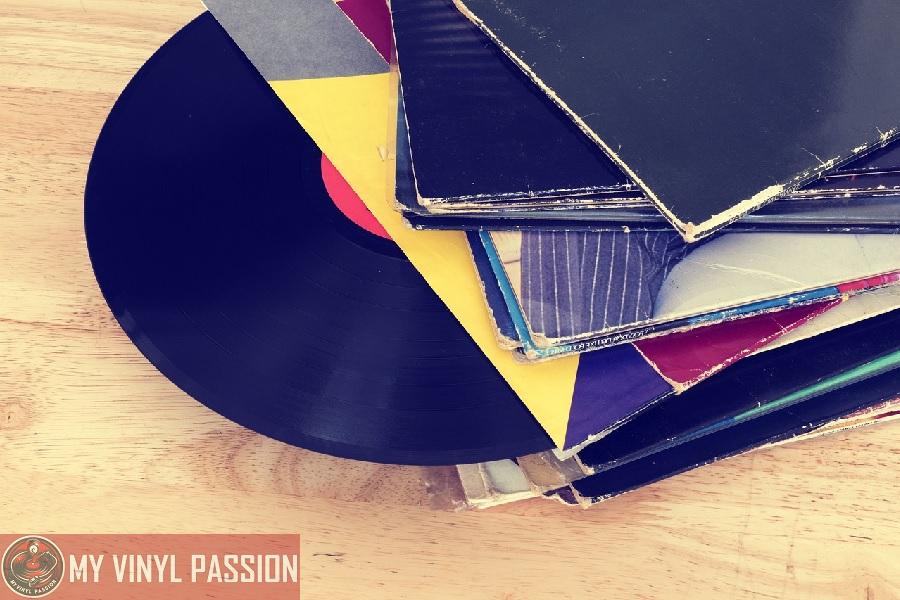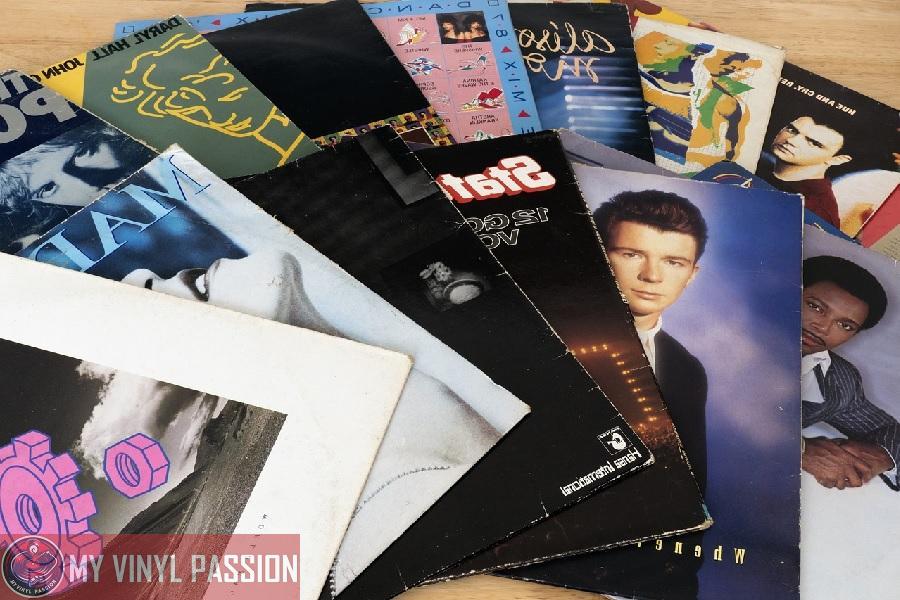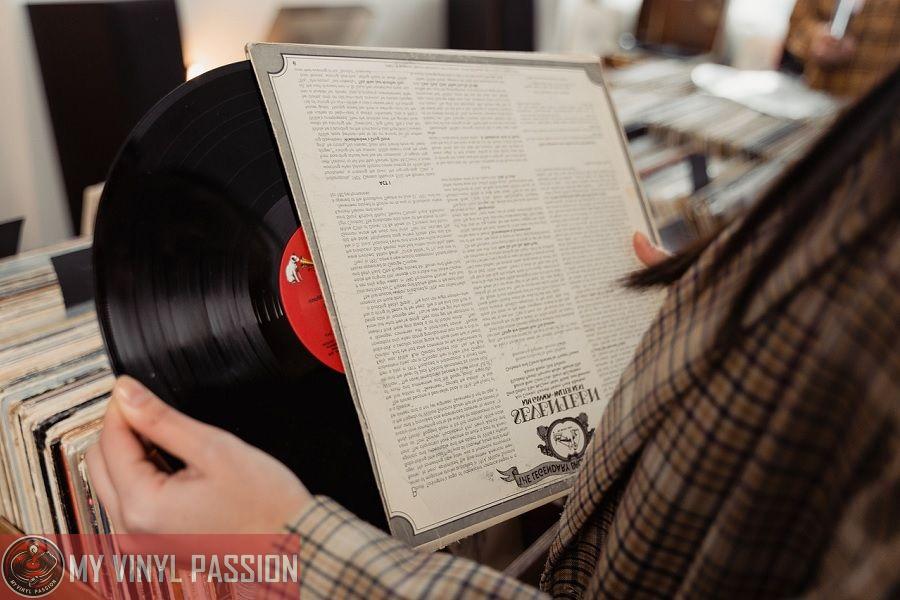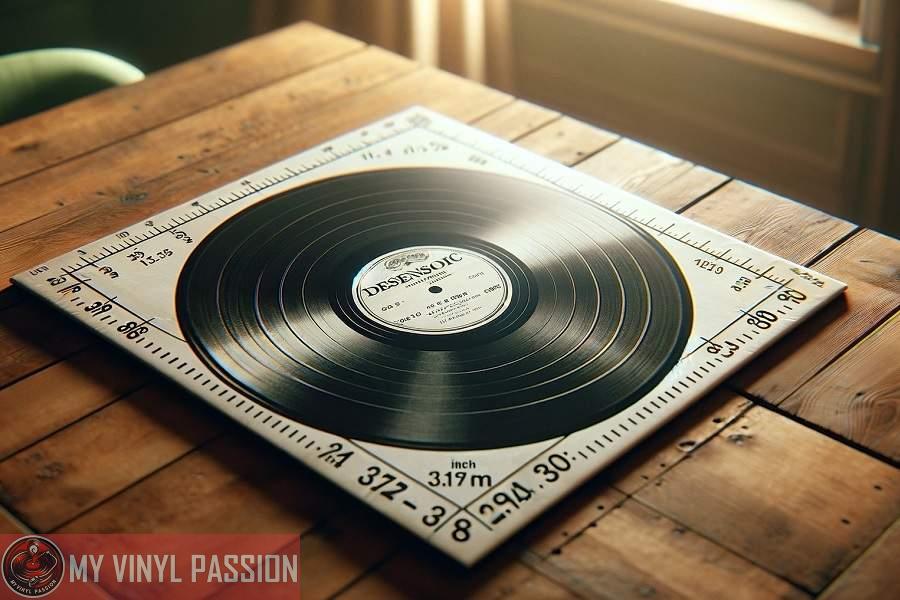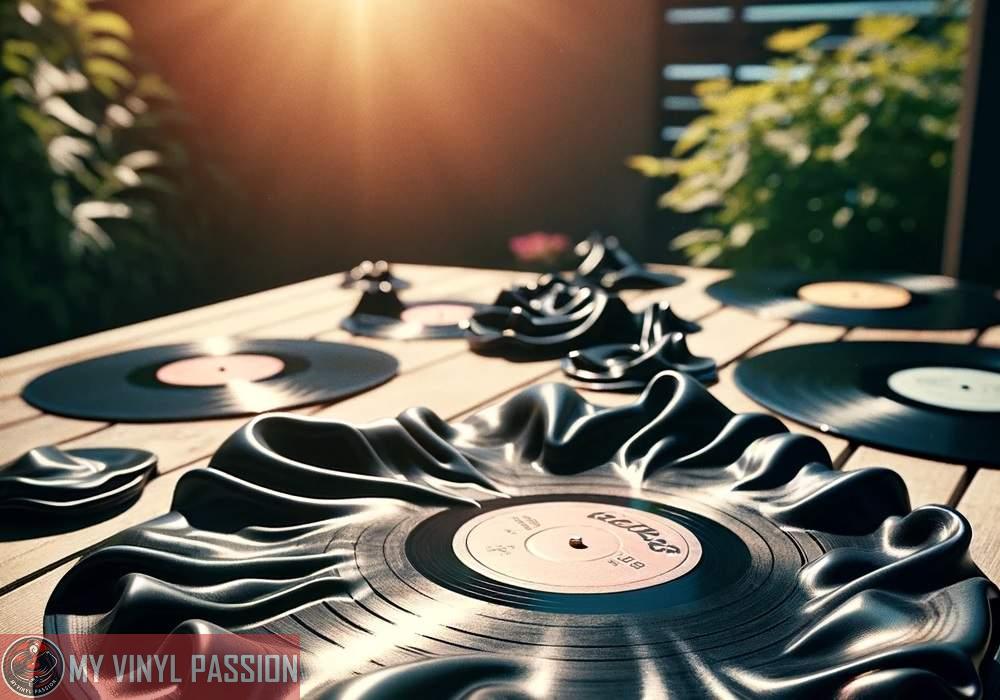Playing vinyl records without a traditional record player may seem challenging, but there are several modern solutions to enjoy the rich sound of vinyl.
With the resurgence of vinyl’s popularity, enthusiasts and casual listeners alike seek alternative methods to experience their cherished records.
Whether due to space constraints, budgetary considerations, or mere curiosity, you have options for playing vinyl records that do not require the conventional turntable setup.
In Summary
Use a USB Turntable: A USB turntable allows you to play vinyl records and convert them to digital format, which can be played on computers or other digital devices.
Portable Record Players: Invest in a portable record player, which is a self-contained unit with built-in speakers, allowing you to play vinyl records without a traditional setup.
Record Player Apps: Some smartphone apps can simulate a record player’s needle on the vinyl record’s surface, playing the music through the phone’s speaker.
Auxiliary Input with Modern Audio Equipment: Connect a modern audio system with an auxiliary input to a device that can play the sound from a vinyl record, like certain USB turntables or adapters.
One such method involves the use of portable record players that are often equipped with built-in speakers.
These compact devices can play vinyl records without the need for additional equipment, offering a straightforward and space-saving solution.
Additionally, advances in technology have ushered in new gadgets such as vinyl record players that convert the analog signals into digital format, allowing you to listen to your vinyl through digital devices.
For those who prefer a more hands-on approach, there are also inventive DIY methods to amplify the sound of a vinyl record using simple household items.
While these alternative playing methods may not match the audio quality provided by high-end turntables, they allow you to appreciate your vinyl records in a variety of settings and circumstances, ensuring that your vinyl collection can still be part of your auditory journey.
Understanding the Basics of Vinyl Playback
To play vinyl records, commonly referred to as LPs (long-playing records), it’s essential to understand how they work.
Vinyl records are analog sound storage mediums featuring grooves spiraled from the periphery to the center. As a record player’s needle (stylus) travels through these grooves, it vibrates to reproduce sound.
- Grooves: The grooves on your vinyl are microscopic and etched with a precision that reflects the original sound’s waveform. When illuminated under a light, they reveal tiny hills and valleys, each representing audio data.
- Sound Quality: The fidelity of the sound you hear from a record correlates with the quality of these grooves and the equipment used for playback. Factors affecting sound clarity include groove spacing and the condition of both the record and the stylus.
For vinyl playback without a traditional record player, various modern equipment can still translate these grooves into audio:
- Digital Turntable: These devices convert analog signals into digital ones, allowing you to play vinyl records through a computer or digital audio system.
- Vinyl Record Player: Portable players may not require external speakers, offering a self-contained solution for vinyl playback.
A key consideration when playing vinyl records is maintaining the integrity of the sound. Clean your records regularly to preserve their grooves, and handle them with care to prevent scratches, which can significantly impact audio quality.
Even without a conventional turntable, your engagement with the tactile experience of vinyl can be both rewarding and sonically enriching.
Alternative Record Playing Devices
In a world where traditional turntables might not always be readily available or convenient, various innovative devices allow you to enjoy your vinyl records with ease.
These alternatives range from modern, portable inventions to vintage players discovered online.
The RokBlok Phenomenon
The RokBlok is the world’s smallest wireless record player, a true novelty that emerged from a Kickstarter campaign.
Instead of placing a record onto a turntable, you place the RokBlok on the record and watch it rotate, and it produces music through its built-in speaker. This device operates with the help of a 9V battery and can connect to Bluetooth speakers for a richer sound.
Vinyl Killer and Soundwagon
Similar to RokBlok, the Vinyl Killer, also recognized as the Soundwagon, is a small-sized record player in the guise of a toy VW bus.
This gimmick drives in circles on your vinyl, reading the grooves through its undermounted cartridge. While it’s a charming sight and can be a hit at parties, it’s more of a toy than a professional audio device.
Seeking Vintage Solutions on eBay
If modern-day gadgets don’t appeal to you, eBay offers a treasure trove of vintage turntable options.
Searching for “portable record player” might yield various products from yesteryears that could satisfy your nostalgia. These devices usually come equipped with their cartridges and often bear a distinct, classic aesthetic. However, condition and quality can vary, so it’s wise to scrutinize listings for operational details and vendor credibility.
Digital Conversions and Streaming
When you’re looking to enjoy your vinyl records without a traditional record player, digital conversion presents a viable solution. This process involves converting your vinyl audio into a digital format that you can easily play back on various modern devices.
Path to Digital Conversion
- Rip the Vinyl: Use a USB turntable to capture the audio.
- Software Assistance: Employ audio conversion software to refine the sound.
- Save Your Music: Choose a digital format (e.g., MP3, FLAC) to store your files.
The digital format preserves the sound quality of your records and makes your music portable and accessible. Once converted, you can stream the digital music across a variety of devices, from smartphones to smart speakers.
Streaming Your Vinyl Collection
- Access Anywhere: Stream from the cloud or your home network.
- Multiple Devices: Play through a computer, a smart TV, or mobile.
Contrasting with CDs and other physical mediums, streaming does not require physical storage space and allows you to access your music from anywhere.
While you may notice slight differences in sound quality depending on your digital file format and streaming service, the convenience of having your entire vinyl collection in your pocket is unparalleled.
Keep in mind, to maintain optimal sound quality during conversion and streaming, it’s crucial to use high-quality ripping equipment and select the proper file format that suits your audio preferences.
Amplification and Sound Output
To play vinyl records without a traditional record player, it’s essential to understand how amplification works and to ensure that sound output is of high quality.
The right combination of receivers, preamps, and speakers will transform the analog signal from your vinyl into the rich, clear sound you’re aiming for through your stereo system or home theater.
The Role of Receivers and Preamps
Receivers and preamps are the cornerstones of your audio setup.
A receiver—which includes a tuner, preamp, and power amplifier—is your stereo system’s central hub. It takes the low-level audio signal from your vinyl’s playback device and amplifies it so that it can power the speakers.
Alternatively, a pre-amp (or preamplifier) specifically manages faint audio signals, increasing their level without adding noise or distortion, and it must be paired with a separate amplifier to power the speakers.
- Receiver: Manages and amplifies audio signals, connects multiple sources.
- Pre-amp: Boosts the vinyl signal, prepares it for amplification.
Selecting the Right Speakers
Choosing the right speakers is vital for optimal sound quality.
Powered speakers, also known as active speakers, have built-in amplifiers and simply require a line-level signal from a pre-amp. This can be a convenient and space-saving option for your setup.
- Powered Speakers: Built-in amplifier; simplifies setup.
For traditional speakers without built-in amplification, ensure your receiver or amplifier offers sufficient power to drive them for a robust sound output.
Speaker specifications will guide your selection to match them effectively with your receiver or amplifier’s output capabilities, which can result in a superior sound experience as you enjoy your vinyl records.
DIY Turntable Setup and Maintenance
When setting up a turntable by yourself, first select a stable surface to minimize vibrations. A Rega or Pro-Ject turntable provides an excellent basis due to their solid construction and user-friendly design.
Initial Setup:
- Platter: Place the platter onto the spindle of your turntable. Ensure it sits flush for even rotation.
- Stylus: Carefully attach the stylus to the cartridge. The stylus, or needle, is delicate, so handle it gently to avoid damage.
Balancing the Tonearm:
- Adjust the counterweight until the tonearm floats horizontally. This prevents the stylus from applying too much pressure and damaging your records.
Tracking Force:
- Refer to your cartridge’s specifications for the recommended tracking force. An At-LP120 turntable, for example, may come with a gauge for accurate adjustments.
Anti-Skating:
- Set the anti-skating dial to the same number as the tracking force. This counterbalances lateral forces while playing a record.
Maintenance:
- Cleaning: Regularly dust off the platter and stylus with a soft brush or a specialized cleaning tool. Clean your records as well to keep sound quality pristine.
- Lubrication: Every few months, lubricate the moving parts according to the manufacturer’s instructions. This ensures smooth operation.
By following these steps and regularly maintaining your DIY turntable, you can expect a reliable performance and longevity from your analog music setup.
FAQs
Can I play vinyl records using modern digital equipment?
Yes, you can use a USB turntable to play vinyl records and convert them to digital files, which can then be played on computers, smartphones, or other digital audio devices.
What is a portable record player and how does it work?
A portable record player is a compact, self-contained unit with built-in speakers. It allows you to play vinyl records without needing a separate turntable, amplifier, or speakers.
Are there smartphone apps that can play vinyl records?
Yes, there are apps available that simulate a record player’s needle, enabling you to play the music from a vinyl record through your phone’s speaker. However, this requires a physical interaction between the phone and the record.
How can I connect a USB turntable to my computer or digital device?
Connect the USB turntable to your computer or digital device using a USB cable. Install any necessary drivers or software, and you can then play or convert the vinyl records to digital format.
Is the sound quality compromised when playing vinyl records without a traditional record player?
The sound quality can vary depending on the method used. USB turntables and portable record players generally offer good quality, but it might not match the authentic experience of a traditional record player. Smartphone apps may provide a lower sound quality and are more for novelty purposes.
